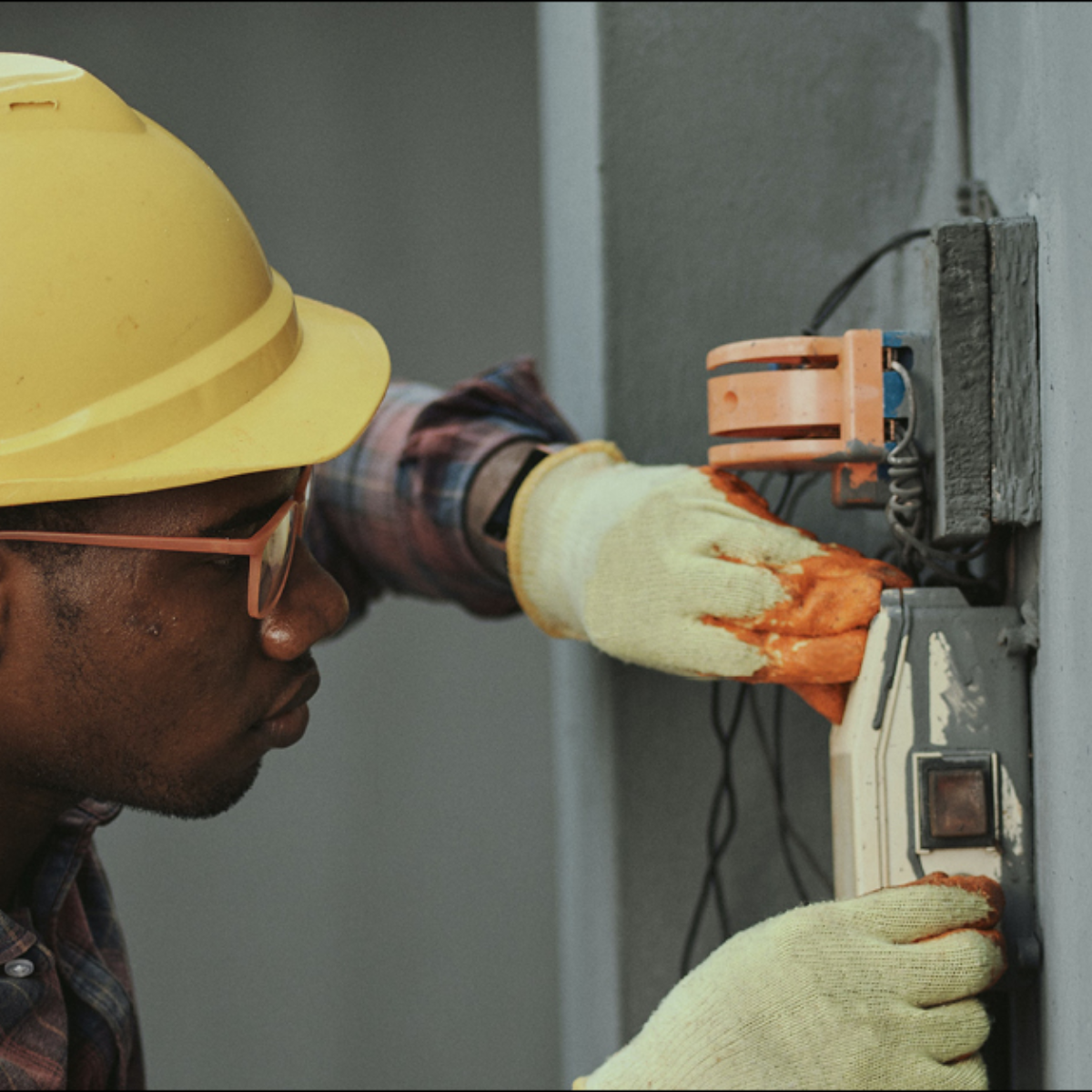Pathway
Electrical Fundamentals
Youth apprentices in Electrical Fundamentals develop essential skills in construction safety, interpreting drawings and blueprints, working with materials and tools, and following electrical worksite procedures. Apprentices are required to meet industry safety and security standards by completing OSHA 10 and First Aid certifications, as well as the Safety and Professional Services registration.
Length of the Apprenticeship: One or two years

Job Competencies
Year 1: Electrical Fundamentals youth apprentices must complete a total of 15 Electrical Fundamentals Competencies and a minimum of 1 Electrical Specialty Competency. Employers can substitute 1 competency with another occupationally appropriate skill. That skill should be added to the competency list for assessment. Year 1 competencies are completed with employer guidance.
Youth apprentices must also complete the following during the first year:
Youth Apprentices must also complete the following during Year 1:
- First Aid Certification
- Occupational Safety Health Administration (OSHA) 10 or 30 Certification
Year 2: Electrical Fundamentals youth apprentices must complete the fifteen Electrical Fundamentals Competencies with minimal supervision and a minimum of 2 different Electrical Specialty Competency than the first year. A specialty competency may be repeated only if the type of construction (residential or commercial) differs from the first year. Employers can substitute 1 competency with another occupationally appropriate skill. That skill should be added to the competency list for assessment. Year 2 competencies are completed with minimal employer guidance.
-
YEAR 1 & 2 Competencies
- Follow safety procedures
- Read construction drawings and plans
- Interpret symbols and procedures
- Contribute to a job task plan
- Work as a member of a construction team
- Prepare work area for construction
- Select construction materials
- Use hand and light duty tools
- Use power tools and equipment
- Perform materials handling
- Install materials per job specifications
- Perform construction measurements
- Maintain a clean and safe work area
- Clean up job site
- Practice quality craftsmanship
Speciality Competencies
- Assist with cutting wire, cable, conduit, and raceway, cording and cutting chasses
- Assist with pulling wires and attaching wires
- Assist with connecting conductors to switches, receptacles or appliances
- Assist with installation of switches, outlet boxes and fixture boxes
- Assist with installation of feeders and circuits
Related Instruction
Students must enroll in 1 High School Credit or 3 College Credits of related instruction each year they participate in the Youth Apprenticeship program.
Purpose of Related Instruction
The purpose of choosing a related instruction course is to ensure students are learning technical and academic skills that support the student's ability to perform their work tasks. This should be done concurrently with on-the-job training to make relevant connections between learning competencies and work.
Choosing Related Instruction
You will collaborate with your YA Coordinator and School Counselor to determine the most appropriate option for related instruction. A course within your high school directly related to the career pathway is ideal, especially if dual credits and/or hours related to a potential registered apprenticeship are offered.
If there is not a directly related course in your school district, related instruction in the same career cluster is also acceptable.
If there is not a course within that career cluster in your school district, you may request to register for a college course through the Start College Now program with a local technical college, Early College Credit from a local university, or from an alternative provider such as Destinations Career Academy.
-
- Home Improvement
- Intro to Construction
- Home Maintenance
- Building/Construction
- Algebra 2
- Business or Consumer Math
- Technical Math or Math for the Trades
- Oral/Interpersonal Communication
- Speech
- Technical Writing & Communication
- Written Communication
- Computer Literacy
- Career Development/Employability Skills
- Entrepreneurship or Intro to Business
- Leadership and Civic Engagement Courses
- Personal Financial Literacy or Consumer Economics
-
- Carpentry plus Residential Wiring or AC/DC
-
- Basic Equipment Fundamentals
Post Secondary
There are numerous opportunities to continue your education after completing the Youth Apprenticeship program.
Registered Apprenticeships
The Construction Electrical pathway can bridge into a registered apprenticeship as Residential Wirer and Construction Electrcian
